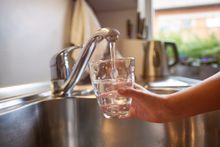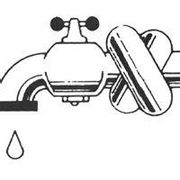
Your home’s plumbing system is designed to bring in water through a network of pipes and carry away wastewater through drains. But, there are instances when the system malfunctions and contaminated water that should be drained makes its way back into your home, creating a health hazard. Backflow devices are designed to prevent this problem from happening. Below is a guide detailing what these devices are.
What Is a Backflow Device?
Also known as a backflow preventer or reduced pressure zone valve, this device is installed as part of your plumbing system. It protects your water supply from getting contaminated by backwater flowing into the lines. The device is installed directly at the point where water from the city or municipality line connects to your home’s water supply line. It automatically closes to prevent water from your home or irrigation system from flowing back into the municipality line due to low pressure.
When installing a backflow preventer system, you have three options: single valve, double-valve system, or both. While a single valve can prevent backflow, it may not be reliable enough to suppress contaminated water that comes in at high pressures—only a multiple-valve preventer setup can do that.
Why Do I Need One?
Backflow devices or  valves are essential to keep potentially harmful backwater from flowing into your home or the municipality’s water supply. Without a backflow device, contaminants in the form of pesticides, bacteria, and toxic chemicals can back up into the pipelines from existing irrigation or fire suppression system when the water pressure is low. Heavy flooding, hydrant use, water service interruptions, and leaking pipes can lead to lower pressure, causing water from your fire and garden sprinkler systems to flow upstream to your drinking supply. Sometimes, backflow can also happen in your sewage system, which brings in wastewater.
valves are essential to keep potentially harmful backwater from flowing into your home or the municipality’s water supply. Without a backflow device, contaminants in the form of pesticides, bacteria, and toxic chemicals can back up into the pipelines from existing irrigation or fire suppression system when the water pressure is low. Heavy flooding, hydrant use, water service interruptions, and leaking pipes can lead to lower pressure, causing water from your fire and garden sprinkler systems to flow upstream to your drinking supply. Sometimes, backflow can also happen in your sewage system, which brings in wastewater.
Have a licensed professional install a multiple-valve system to ensure that you get the right size and type for your plumbing. Installation sometimes requires permits, which they can obtain. Be sure to test your backflow devices regularly—state-certified testers can come to your property to check if your valves are working as intended.
Learn more about backflow device and prevention by asking the plumbing professionals at John Lockwood Plumbing in Ontario, NY. Serving the Greater Rochester area for almost 50 years, they offer a range of plumbing services, including faucet repair, water heater replacement, and water line installation. Call (585) 265-0736 to schedule plumbing repair or visit their website to view customer testimonials.
About the Business
Have a question? Ask the experts!
Send your question

